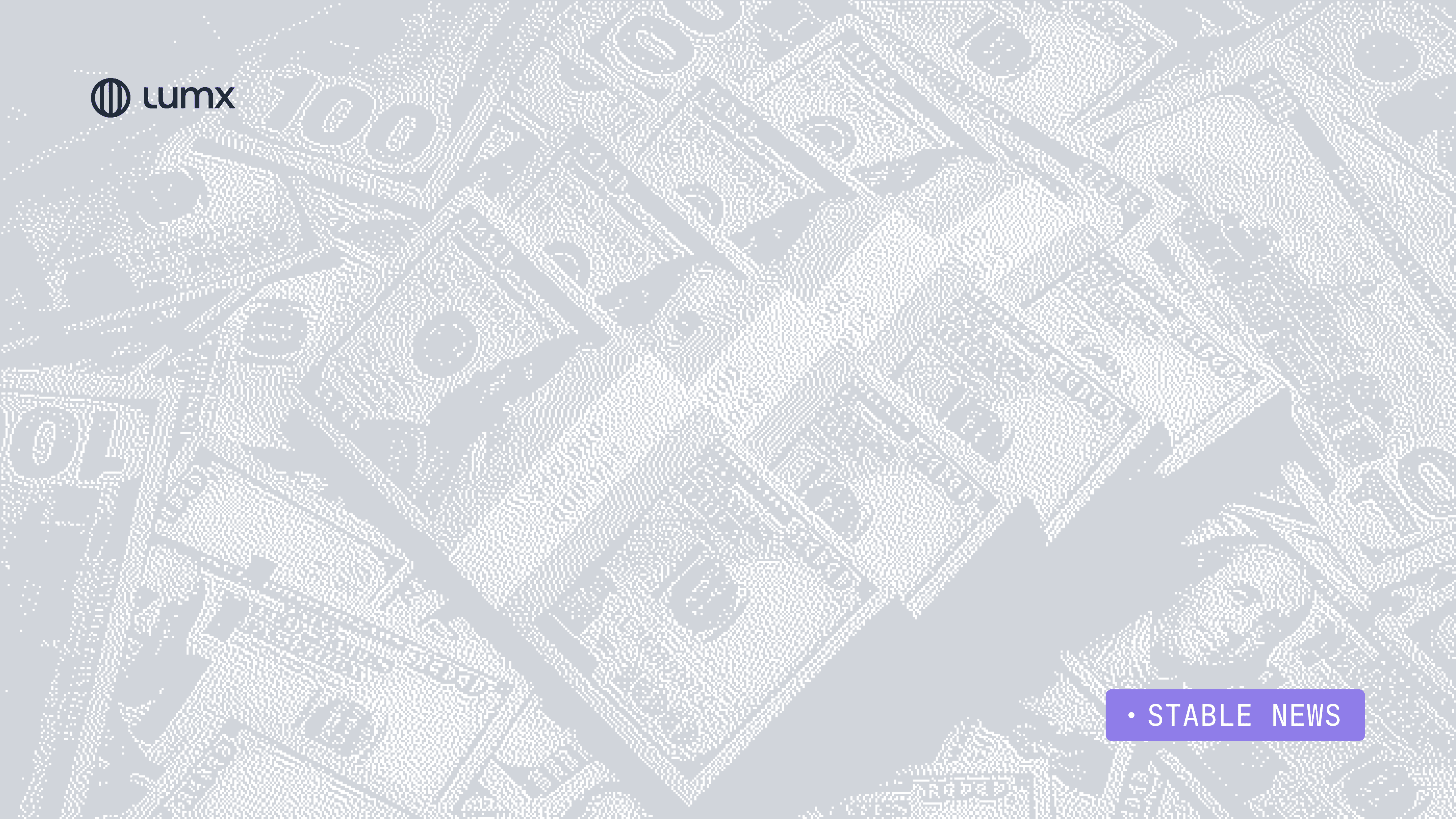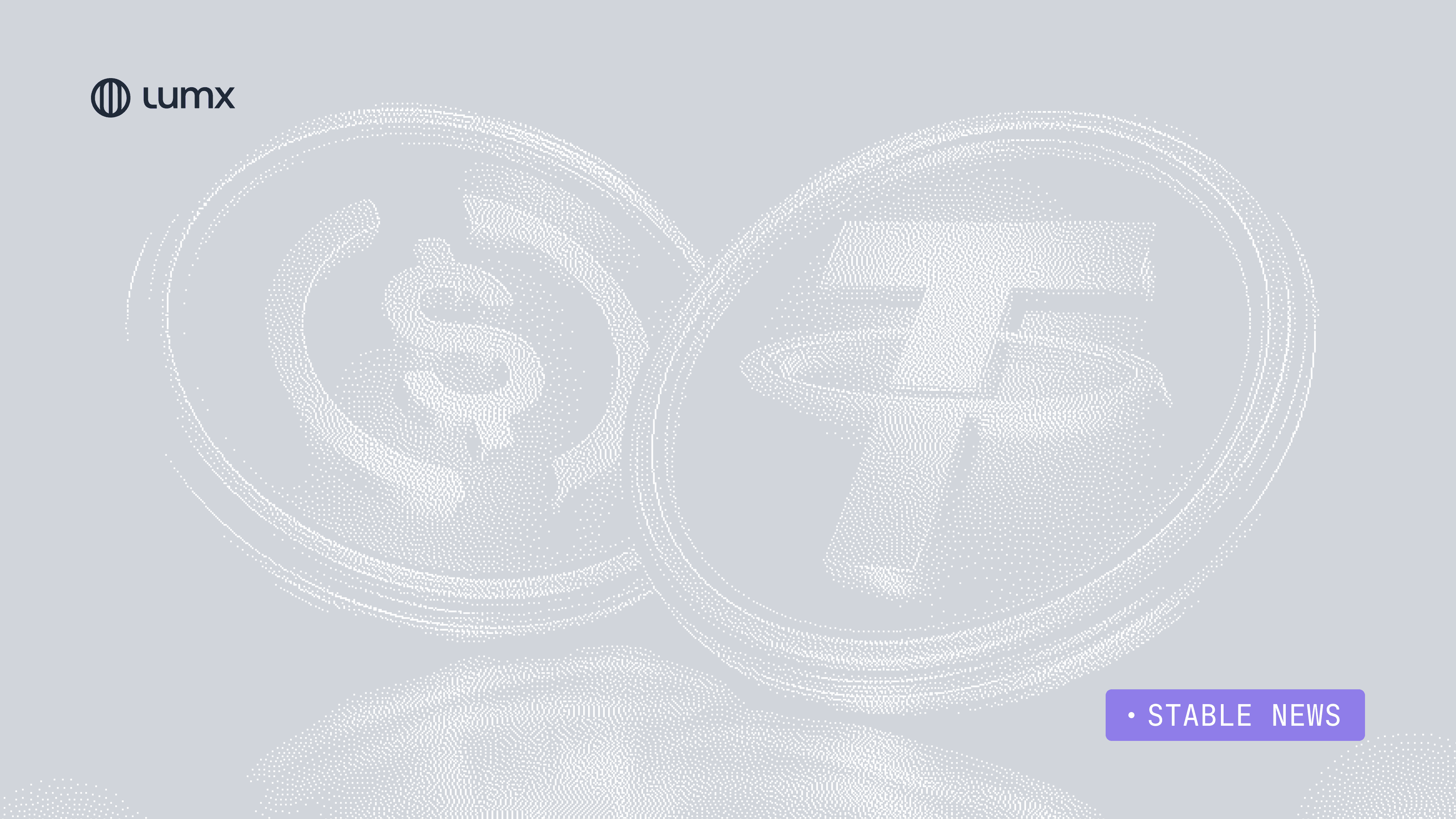Stable News is Lumx’s weekly curation of the most important developments in stablecoins and their impact on the global digital financial ecosystem. In this edition, we highlight Circle’s initiative to become a nationally licensed bank, Coinbase’s progress in Europe under the MiCA regulatory framework, Revolut’s entrance into the stablecoin debate with a focus on Latin America, Hong Kong’s new regulatory framework, and the warnings raised by the report “Cryptomercantilism vs. Monetary Sovereignty” about the risks to monetary sovereignty as private issuers gain ground.
Reading time: 7 minutes
Circle Applies for National Banking License to Supervise USDC Reserves
Circle has submitted a request to the OCC (Office of the Comptroller of the Currency) to establish a national trust bank, the First National Digital Currency Bank. The aim is to directly manage the reserves backing USDC, a stablecoin with over $61 billion in circulation. The license would allow Circle to operate under the newly passed GENIUS Act and reinforce its position as a regulated issuer of financial infrastructure.
Although the license does not permit traditional banking activities such as lending or deposit-taking, it offers autonomy in asset custody, aligning with governance standards expected by regulators and institutional partners. The model positions USDC as a licensed financial rail, with the ambition of becoming an interoperable monetary layer with the U.S. banking system.
Why it matters:
✅ Strengthens Circle’s positioning as a systemic infrastructure provider for the digital dollar.
✅ A national bank license would allow Circle to integrate stablecoins into the financial system without relying on traditional intermediaries.
✅ Anticipates GENIUS Act requirements, signaling that stablecoin issuers are preparing to compete on equal footing with banks.
Coinbase Obtains MiCA License, Bolstering Regulatory Footprint in Europe
Coinbase has secured full authorization under the MiCA (Markets in Crypto-Assets) regulation, issued by Luxembourg’s regulatory authority. This license allows the company to operate across all 27 European Union countries under a unified legal framework. The move establishes Luxembourg as Coinbase’s European hub, complementing existing licenses in Germany, France, Italy, and Spain.
This is a strategic step toward a more efficient and cohesive European operation and sends a strong signal to global regulators about Coinbase’s commitment to compliance. At a time when the U.S. is still defining its regulatory approach, Coinbase’s progress in Europe demonstrates how clear regulation can drive institutional adoption.
Why it matters:
✅ MiCA enables Coinbase to operate with legal certainty and scale in one of the world’s largest markets.
✅ Establishing Luxembourg as a hub strengthens its position in a pro-innovation regulatory environment.
✅ Demonstrates how predictable regulation accelerates the growth and institutionalization of crypto products.
Revolut Considers Issuing Its Own Stablecoin and Expands in Latin America
Revolut, a neobank with 55 million users in over 160 countries, is in talks with at least one crypto-native company to develop its own stablecoin. This is part of a broader strategy that includes the expansion of its crypto exchange, Revolut X, the launch of integrated banking products, and its recent acquisition of Banco Cetelem in Argentina, which includes a local banking license.
With a strong presence in Europe and growing investments in Latin America, the company sees stablecoin issuance as a way to reduce transaction costs, gain more control over settlement infrastructure, and capture yield from reserves. Leveraging its existing user base, Revolut could use its own currency as an internal tool for payments, remittances, and treasury management, particularly in response to currency volatility in countries like Argentina.
Why it matters:
✅ Shows how neobanks are creating their own financial rails, reducing dependency on third-party issuers.
✅ Reinforces the idea that stablecoins are becoming a strategic asset for platforms with large user bases.
✅ The focus on Latin America highlights the region’s continued role as a testbed for practical adoption of digital currencies.
Hong Kong Establishes Stablecoin Licensing Regime and Positions as Regulatory Hub in Asia
In May, Hong Kong’s Legislative Council approved the “Stablecoins Ordinance,” creating a robust licensing framework for fiat-backed stablecoin issuers. The HKMA (Hong Kong Monetary Authority) will officially open license applications in August 2025 and has already begun consultations to define operational guidelines.
The goal is clear: to make Hong Kong a global regulatory reference, with a focus on monetary stability, international compliance, and attracting institutional issuers. The model mandates high standards for reserves, governance, redemption policies, and cross-border compliance, anchored in FSB (Financial Stability Board) guidelines.
Why it matters:
✅ Stablecoin regulation is consolidating in Asia, with Hong Kong leading a model geared toward institutional adoption and risk control.
✅ The licensing framework may serve as a model for countries seeking to balance innovation with financial stability.
✅ Brings the digital ecosystem closer to global trade, especially for regions like Brazil with strong commercial ties to Asia.
Report “Cryptomercantilism vs. Monetary Sovereignty” Warns of Geopolitical Risks from Private Stablecoin Infrastructure
A report by Alex Johnson explores the potential impacts of private stablecoin growth on countries’ monetary sovereignty, particularly in emerging markets. It argues that major issuers, like Circle and Tether, could become indirect channels of financial and geopolitical influence by controlling a critical layer of global liquidity.
The concept of “cryptomercantilism” highlights how issuers aim to maximize control over infrastructure and distribution, often lacking transparency or alignment with local interests. As a counterpoint, the author advocates for a model of “digital monetary sovereignty,” in which states create interoperable digital currencies backed by public or institutionally coordinated infrastructure.
Why it matters:
✅ Highlights that stablecoin infrastructure is not neutral: it involves power, control, and influence over financial flows.
✅ Frames “private money infrastructure” as a potential extension of corporate (or even state) interests, posing new challenges for the Global South.
✅ Positions digital sovereignty and technical standards as central themes for the next decade, with stablecoins at the heart of the debate.
Stablecoins and the Moment of Convergence for Global Financial Infrastructure
From banks applying for licenses to custody their own reserves, to neobanks launching their own currencies, to regulatory hubs like Hong Kong and crypto firms operating under European rules, the past weeks reveal a coordinated and strategic movement. Each player is positioning not just to issue stablecoins, but to define the rails, controls, and networks through which they will circulate.
More than just adoption, the conversation is now about architecture. Interoperability, compliance, reserves, regulation, and geographic reach are the new competitive metrics. Stablecoins are no longer just financial tools, they are becoming core components of the new global monetary infrastructure. And understanding who is building, controlling, and connecting these components is key to understanding the financial system now taking shape.
See you in the next edition.








